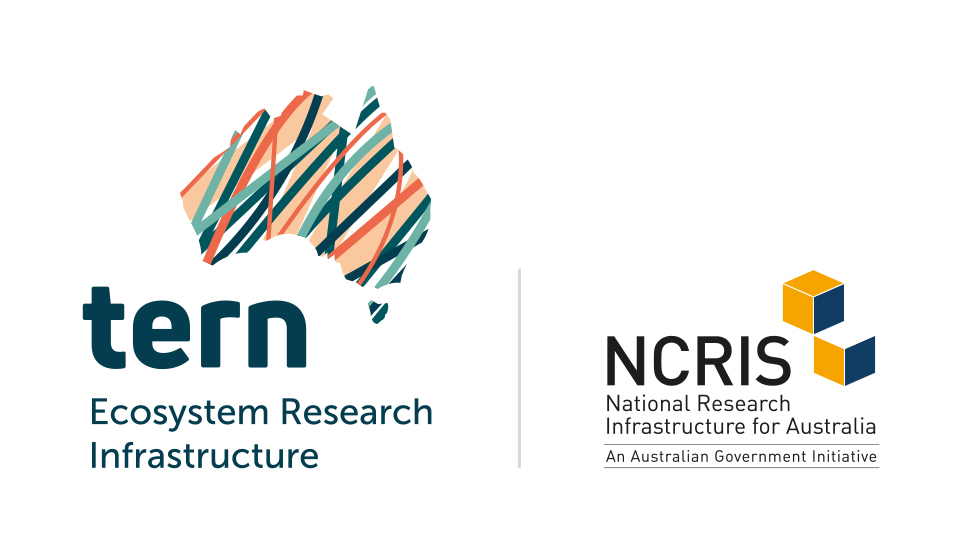Litchfield OzFlux tower site
A Savanna Super Site (SSS) has been established within Litchfield National Park as part of the Australian Supersite Network (www.tern-supersites.net.au) that is supported by the Terrestrial Ecosystem Research Network (TERN, www.tern.net.au). The SSS is a research and monitoring site representative of high rainfall, frequently burnt tropical savanna. Tropical savanna in Australia occupies 1.9 million km2 across the north and given the extent of this biome, understanding biogeochemical cycles, impacts of fire on sequestration, vegetation and fauna is a national priority.
In the NT, savanna ecosystems are largely intact in terms of tree cover, with only modest levels of land use change. Despite this, there is evidence of a loss of biodiversity, most likely due to shifts in fire regimes and a loss of patchiness in the landscape. Approximately 40% of the savanna burn every year and understanding fire impacts on fauna and flora is essential for effective land management. Vast areas, limited infrastructure and human resources makes the role of remote sensing all the more important for land management in north Australia and this super site aims to address these needs by establishing infrastructure at a significant savanna site of uniform topography within a managed national park (Lichfield NP) that makes it ideal for remote sensing as well as flux studies.
The site will provide nationally consistent observations of vegetation dynamics, faunal biodiversity, micrometeorology (climate, radiation, fluxes of carbon and water), hydrology and biogeochemistry to examine the impacts of fire regime, climate on carbon stocks and GHG emissions, and impacts on habitat quality via ongoing monitoring of vegetation structure and fauna. A wide range of ground based observations of vegetation structure and floristics is planned and all will link to remote sensing of fire and vegetation change over time. Measurements of carbon sequestration and remote sensing properties of vegetation through time will be achieved via the installation of a 40 m guyed tower equipped with instrumentation capable of directly measuring CO2, water use and surface energy properties (energy balance, reflectance). Co-location of Flux observations and remote sensing systems will be co-located to provide TERN with a ground-/air-/space based remote sensing observation stream. This will enable the development of tools describing fire occurrence, severity and associated greenhouse gas emissions, evapotranspiration and carbon sequestration.
On-going fauna and flora monitoring will be undertaken at 5 sites within the SSS footprint that are component sites of the ‘3 Parks’ data base, a long-term (15 years+) monitoring program across the 3 major national parks of the NT (Kakadu, Nitmiluk and Litchfield National Parks) that is examining the effects of fire frequency on vegetation structure and woody growth rates. Fire management, both protective and experimental burning regimes will be implemented across the SSS to assess impacts of fire on flora, fauna and biogeochemical cycles in savanna.
Key research questions
What are the impacts of prevailing fire regimes (primarily frequency, but also intensity, extent, heterogeneity) on vegetation structure and composition, habitat quality, fragmentation and vertebrate faunal biodiversity?
How does vegetation structure, climate drivers and fire regime influence savanna carbon sequestration rate?
How can fire management contribute to greenhouse gas abatement and carbon sequestration in savanna ecosystems?
What are the impact of climate change on fire regimes and subsequent feedbacks to savanna carbon and water cycles ?
The tower will provide longterm measurements as part of the Ozflux network .
The infrastructure is funded through the NCRIS TERN Supersites and OzFlux facilities
In the NT, savanna ecosystems are largely intact in terms of tree cover, with only modest levels of land use change. Despite this, there is evidence of a loss of biodiversity, most likely due to shifts in fire regimes and a loss of patchiness in the landscape. Approximately 40% of the savanna burn every year and understanding fire impacts on fauna and flora is essential for effective land management. Vast areas, limited infrastructure and human resources makes the role of remote sensing all the more important for land management in north Australia and this super site aims to address these needs by establishing infrastructure at a significant savanna site of uniform topography within a managed national park (Lichfield NP) that makes it ideal for remote sensing as well as flux studies.
The site will provide nationally consistent observations of vegetation dynamics, faunal biodiversity, micrometeorology (climate, radiation, fluxes of carbon and water), hydrology and biogeochemistry to examine the impacts of fire regime, climate on carbon stocks and GHG emissions, and impacts on habitat quality via ongoing monitoring of vegetation structure and fauna. A wide range of ground based observations of vegetation structure and floristics is planned and all will link to remote sensing of fire and vegetation change over time. Measurements of carbon sequestration and remote sensing properties of vegetation through time will be achieved via the installation of a 40 m guyed tower equipped with instrumentation capable of directly measuring CO2, water use and surface energy properties (energy balance, reflectance). Co-location of Flux observations and remote sensing systems will be co-located to provide TERN with a ground-/air-/space based remote sensing observation stream. This will enable the development of tools describing fire occurrence, severity and associated greenhouse gas emissions, evapotranspiration and carbon sequestration.
On-going fauna and flora monitoring will be undertaken at 5 sites within the SSS footprint that are component sites of the ‘3 Parks’ data base, a long-term (15 years+) monitoring program across the 3 major national parks of the NT (Kakadu, Nitmiluk and Litchfield National Parks) that is examining the effects of fire frequency on vegetation structure and woody growth rates. Fire management, both protective and experimental burning regimes will be implemented across the SSS to assess impacts of fire on flora, fauna and biogeochemical cycles in savanna.
Key research questions
What are the impacts of prevailing fire regimes (primarily frequency, but also intensity, extent, heterogeneity) on vegetation structure and composition, habitat quality, fragmentation and vertebrate faunal biodiversity?
How does vegetation structure, climate drivers and fire regime influence savanna carbon sequestration rate?
How can fire management contribute to greenhouse gas abatement and carbon sequestration in savanna ecosystems?
What are the impact of climate change on fire regimes and subsequent feedbacks to savanna carbon and water cycles ?
The tower will provide longterm measurements as part of the Ozflux network .
The infrastructure is funded through the NCRIS TERN Supersites and OzFlux facilities
Created by Jason Beringer,
Creation date: 2015-12-10 01:04,
Modified by Jason Beringer,
Modified date: 2024-03-06 11:50
Temporal Coverage:
2015-06-23 - 2016-04-27
Metadata Published:
Yes
Data Licence
The Creative Commons Attribution 4.0 International License (CC BY 4.0) restricts the development of new data/products, so that a user can:
- copy, re-use, share and distribute the copies of the data
provided that, whenever the data are copied, re-used, or distributed the user ensures that:
- credit is given to the original sources/s of the data (and any other nominated parties) in the manner stipulated (Attribution);
Citation Information
If you make use of this collection in your research, please cite:
Jason Beringer (2015
) Litchfield OzFlux tower site
OzFlux: Australian and New Zealand Flux Research and Monitoring hdl: 102.100.100/25690
A total of
9
data file(s) in this collection
File Name:
Litchfield_2022_L3.nc
Site Name:
Litchfield
Processing Level:
File Name:
Litchfield_2023_L3.nc
Site Name:
Litchfield
Processing Level:
File Name:
Litchfield_2021_L3.nc
Site Name:
Litchfield
Processing Level:
File Name:
Litchfield_2020_L3.nc
Site Name:
Litchfield
Processing Level:
File Name:
Litchfield_2019_L3.nc
Site Name:
Litchfield
Processing Level:
File Name:
Litchfield_2018_L3.nc
Site Name:
Litchfield
Processing Level:
File Name:
Litchfield_2017_L3.nc
Site Name:
Litchfield
Processing Level:
File Name:
Litchfield_2016_L3.nc
Site Name:
Litchfield
Processing Level:
File Name:
Litchfield_2015_L3.nc
Site Name:
Litchfield
Processing Level:






